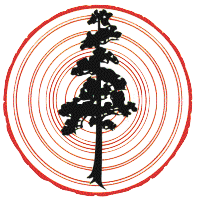COMPOSITION AND DISTURBANCE HISTORY OF A FOREST FRAGMENT IN VIRGINIA, USA
Forest ecologists and dendrochronologists are beginning to recognize the conservation and research value of forest fragments. In this study, a forest fragment was studied to quantify the current vegetation composition and structure, reconstruct the disturbance history, and identify evidence of future changes in forest composition. The most important overstory trees were white oak (Quercus alba), eastern white pine (Pinus strobus), scarlet oak (Quercus coccinea), and chestnut oak (Quercus montana). This overstory composition appears to have developed during a 100-year period from 1850 to 1950, when the forest experienced continuous low-levels of disturbance. There was a timber harvest in the early 1950s, which appears to have initiated a reduction in the successful establishment of oaks and an increase in the successful establishment of red maple (Acer rubrum) and eastern white pine. Thus, although this forest fragment is not spatially connected to the larger eastern deciduous forest, it shares the regional pattern of mesophication observed across this region and is likely to experience a shift in composition towards more mesic tree species and a reduction in the dominance of oak.ABSTRACT

(A) The tree-ring widths from the oldest white oak revealed three disturbance periods: the late 1780s (allowing this tree to establish), the late 1860s to early 1870s, and the early 1950s. (B) Decade of establishment for sampled eastern white pine, pignut hickory, and white oak trees at the Corporate Research Center Woods on the campus of Virginia Polytechnic Institute and State University.

A spaghetti plot of all pignut hickory tree-ring width series from the Corporate Research Center Woods, Virginia.

(A) Aerial photograph taken in 1953 showing the Corporate Research Center Woods (outlined in white) with an intact forest canopy (B) Aerial photograph taken in 1956 showing the Corporate Research Center Woods (outlined in white) with gaps in the canopy indicating a recent timber harvest. Source for both images: U.S. Geological Survey.
Contributor Notes
